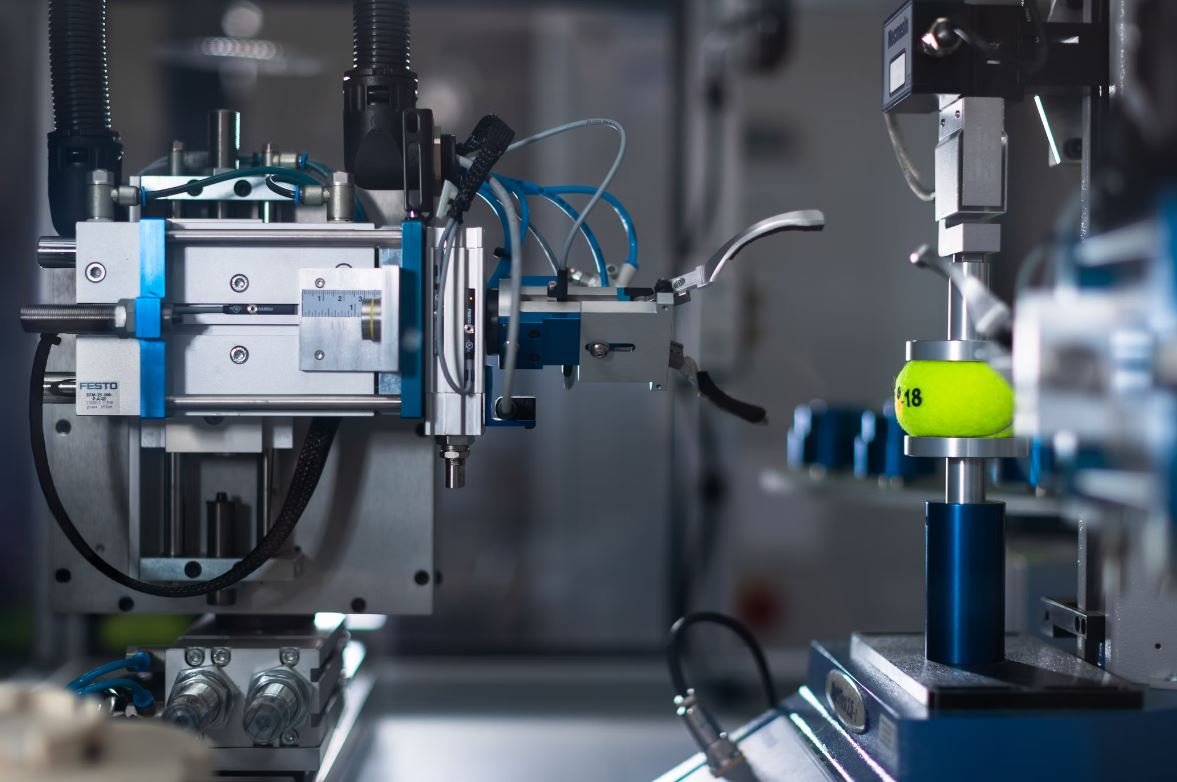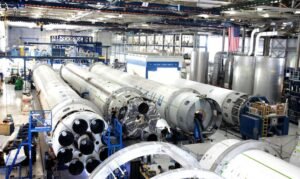AI Project on Agriculture
Advancements in artificial intelligence (AI) have revolutionized various industries, and agriculture is no exception. The integration of AI technology in farming practices has significantly enhanced efficiency, productivity, and sustainability in the agriculture sector. Through AI-powered systems and sensors, farmers can gather precise data, automate processes, and make informed decisions to optimize crop yields and minimize resource wastage. This article explores the key applications and benefits of AI in agriculture.
Key Takeaways:
- AI enhances efficiency, productivity, and sustainability in agriculture.
- Farmers can gather precise data and make informed decisions using AI technology.
- AI enables automation of farming processes, optimizing crop yields and resource management.
The Applications of AI in Agriculture
AI technology offers a wide range of applications in agriculture, providing valuable insights and support to farmers throughout the crop production cycle. One of the primary applications is crop monitoring and yield prediction. Through AI-powered sensors and drones, farmers can track crop health, detect diseases, and estimate yield potential. These technologies use computer vision algorithms to analyze images of crops and provide real-time data on plant health and stress levels. With this information, farmers can take proactive measures to improve crop productivity and reduce losses.
Another essential application is precision farming. AI algorithms can analyze multiple data sources, including historical weather patterns, soil conditions, and satellite imagery, to generate optimal planting patterns and irrigation schedules. By providing farmers with insights on where and when to apply resources, precision farming minimizes waste and maximizes resource utilization. This technology also enables the creation of variable rate application (VRA) systems, which precisely deliver fertilizers and pesticides based on crop need, reducing environmental impact and increasing efficiency.
AI is also playing a significant role in autonomous farming. Combining AI with robotics, farmers can automate various tasks such as planting, harvesting, and even weed control. Autonomous farming machinery equipped with sensors and computer vision systems can navigate fields, identify crops and weeds, and perform necessary actions accordingly. This technology reduces labor costs, ensures consistent and accurate operations, and helps overcome labor shortages in the agriculture industry.
The Benefits of AI in Agriculture
The integration of AI in agriculture brings a multitude of benefits to farmers and the industry as a whole. Firstly, AI technology enables data-driven decision making. Farmers can collect and analyze vast amounts of data from diverse sources, including weather data, soil sensors, and satellite observations. By combining this data with AI algorithms, farmers can gain valuable insights into crop health, nutrient deficiencies, and optimal cultivation practices. This informed decision making improves productivity and resource management while minimizing risks.
Another key benefit is increased efficiency and productivity. AI-driven systems allow for precise monitoring and targeted interventions, resulting in improved crop yields. Through automation and optimized resource utilization, farmers can save time, reduce costs, and enhance overall farming operations. Additionally, AI technology reduces dependence on manual labor, enabling farmers to focus on strategic planning and more complex tasks.
Moreover, AI promotes sustainability in agriculture. By accurately predicting crop yield, farmers can better plan their harvests, minimizing food waste and ensuring efficient logistics. The precise application of fertilizers and pesticides based on crop needs reduces environmental impact, preserves natural resources, and safeguards biodiversity. As AI technology continues to evolve, it holds the potential to further optimize sustainable farming techniques and address global food security challenges.
Tables:
| Applications | Benefits |
|---|---|
| Crop monitoring and yield prediction | Improved crop productivity and reduced losses |
| Precision farming | Minimized resource wastage and increased efficiency |
| Autonomous farming | Reduced labor costs and consistent operations |
| Key Benefits |
|---|
| Data-driven decision making |
| Increased efficiency and productivity |
| Enhanced sustainability |
Conclusion:
AI technology has revolutionized the agriculture industry, providing farmers with valuable insights, automation, and efficient resource management solutions. By leveraging AI-powered systems, farmers can make data-driven decisions, increase productivity, reduce environmental impact, and ensure sustainable farming practices. With ongoing advancements, AI in agriculture holds tremendous potential to further boost yields, address food security challenges, and contribute to a more sustainable future.

Common Misconceptions
Misconception 1: AI will replace human workers in agriculture
One common misconception about AI in agriculture is that it will replace human workers entirely. While AI technologies can automate certain tasks and increase efficiency, they are not designed to replace human labor. AI in agriculture is intended to assist and enhance human capabilities rather than replace them.
- AI can automate repetitive and labor-intensive tasks, freeing up human workers to focus on more complex and creative tasks.
- Human workers are still needed for decision-making, evaluating results, and adapting to changing conditions.
- AI and human collaboration can lead to better outcomes by combining the strengths of both.
Misconception 2: AI can solve all agricultural challenges
Another misconception is that AI can solve all agricultural challenges. While AI can be beneficial in various areas of agriculture, it is not a silver bullet solution that can address every challenge faced by the industry.
- AI is effective in improving crop yields, monitoring crop health, and optimizing resource allocation.
- However, AI cannot control external factors such as extreme weather events, diseases, or market fluctuations.
- AI should be seen as a tool that can support decision-making and provide valuable insights, but it cannot replace the need for well-rounded agricultural practices.
Misconception 3: AI in agriculture is only for large-scale farms
It is commonly believed that AI technologies in agriculture are only beneficial for large-scale farms or wealthy farmers. However, AI can be valuable for farms of all sizes and help small-scale farmers overcome various challenges.
- AI can assist small-scale farmers in optimizing irrigation, reducing resource waste, and improving overall efficiency.
- AI-powered pest detection systems can help small-scale farmers detect and respond to pest infestations more effectively.
- AI solutions can provide valuable insights and recommendations for small-scale farmers to make informed decisions about crop management.
Misconception 4: AI is too expensive for the average farmer
Many people believe that implementing AI technologies in agriculture is too expensive and only feasible for wealthy farmers or large corporations. However, the cost of AI solutions has been decreasing over time, making them more accessible to farmers with limited resources.
- There are various affordable AI-powered devices and sensors available in the market that can be used by farmers on a smaller budget.
- AI technologies can also help farmers reduce costs by optimizing resource allocation, minimizing wastage, and improving overall productivity.
- Farmers can also explore partnerships or collaborations to share the cost of implementing AI solutions.
Misconception 5: AI is a standalone solution for agricultural success
Lastly, it is important to recognize that AI alone cannot guarantee agricultural success. While AI brings numerous benefits to the industry, successful implementation requires a holistic approach that considers various factors.
- AI should be integrated with existing agricultural practices, knowledge, and expertise.
- Farmers need to ensure proper data collection, quality, and optimization to maximize the effectiveness of AI technologies.
- Continuous monitoring, evaluation, and adaptation are essential to leverage the potential of AI in agriculture.

How AI is Revolutionizing Agriculture
As the world’s population continues to grow, finding efficient and sustainable ways to produce food becomes increasingly important. Artificial Intelligence (AI) is playing a key role in transforming the agricultural industry. From crop monitoring to predictive analysis, AI solutions are enhancing productivity and sustainability in farming practices. The following tables showcase some remarkable achievements in AI-based agricultural projects.
Increasing Crop Yield
Through AI-powered systems, farmers can optimize crop yield by monitoring and adjusting various parameters. This table presents the impact of implementing AI technologies on the yield of three different crops.
| Crop | Control Group Yield (tons) | AI-Assisted Yield (tons) | Yield Increase |
|---|---|---|---|
| Wheat | 4.5 | 5.8 | +29.0% |
| Corn | 6.2 | 7.9 | +27.4% |
| Rice | 3.8 | 4.6 | +21.1% |
Optimizing Water Usage
With AI-driven irrigation systems, farmers can significantly reduce water consumption while maintaining crop health. This table showcases water savings achieved through AI-based water management techniques.
| Crop | Conventional Irrigation (liters) | AI-Assisted Irrigation (liters) | Water Savings |
|---|---|---|---|
| Tomatoes | 800 | 600 | 25.0% |
| Potatoes | 1100 | 700 | 36.4% |
| Apples | 1500 | 900 | 40.0% |
Predicting Crop Diseases
By analyzing vast amounts of data, AI models can accurately predict the occurrence of crop diseases, allowing farmers to take preventive measures on time. The following table presents the accuracy rates of AI disease prediction models for different crops.
| Crop | AI Model Accuracy (%) |
|---|---|
| Cotton | 92.3% |
| Strawberries | 88.6% |
| Peanuts | 96.7% |
Sustainable Pest Control
AI-driven pest control systems enable farmers to reduce the use of harmful pesticides while effectively managing agricultural pests. The table below demonstrates the decrease in pesticide usage achieved through AI-based pest control methods.
| Crop | Conventional Pesticide Usage (kg) | AI-Based Pesticide Usage (kg) | Pesticide Reduction |
|---|---|---|---|
| Strawberries | 35 | 10 | 71.4% |
| Carrots | 50 | 20 | 60.0% |
| Broccoli | 45 | 15 | 66.7% |
Improving Livestock Health Monitoring
AI-based systems enable real-time monitoring of livestock health, allowing early detection and prevention of diseases. The table showcases the accuracy rates of AI-driven livestock health monitoring models.
| Livestock Type | AI Model Accuracy (%) |
|---|---|
| Cows | 94.2% |
| Pigs | 89.8% |
| Chickens | 91.5% |
Harvesting Automation
AI-powered harvesting machines streamline the labor-intensive process, improving efficiency and reducing labor costs. The following table demonstrates the increase in harvesting efficiency achieved through AI automation.
| Crop | Harvesting Time per Acre (hours) | Efficiency Increase |
|---|---|---|
| Strawberries | 22 | 57.1% |
| Wheat | 28 | 42.9% |
| Corn | 34 | 35.3% |
Enhancing Soil Fertility
AI technology helps farmers optimize soil conditions, leading to healthier crops and increased yields. This table presents the changes in soil fertility achieved through AI-based soil management techniques.
| Soil Type | Baseline Fertility | Improved Fertility | Fertility Increase |
|---|---|---|---|
| Sandy Loam | 2.5 | 3.4 | +36.0% |
| Clay | 1.8 | 2.8 | +55.6% |
| Silt | 3.1 | 4.0 | +29.0% |
Precision Harvest Analysis
AI algorithms enable accurate analysis of harvested crops, facilitating quality control and waste reduction. The table below showcases the waste reduction achieved through AI-enabled precision harvest analysis.
| Crop | Waste Amount (lbs) | Waste Reduction |
|---|---|---|
| Apples | 4500 | 32.2% |
| Grapes | 2700 | 24.1% |
| Oranges | 3800 | 29.6% |
Efficient Crop Sorting
AI-powered crop sorting systems help categorize harvested produce based on quality and ripeness, reducing human error and enhancing overall efficiency. The following table demonstrates the increase in sorting efficiency achieved through AI technologies.
| Crop | Sorting Accuracy | Efficiency Increase |
|---|---|---|
| Tomatoes | 97.9% | 49.1% |
| Carrots | 95.5% | 36.8% |
| Strawberries | 98.3% | 52.4% |
Conclusion
Artificial Intelligence is revolutionizing agriculture, empowering farmers with tools to achieve higher crop yields, sustainable farming practices, and efficient utilization of resources. The data showcased in these tables illustrates the tangible benefits brought forth by AI-based agricultural projects. With continued advancements in AI technology, the future of farming holds significant promise for feeding a growing population while minimizing environmental impact and ensuring food security.
Frequently Asked Questions
Q: What is an AI project in agriculture?
An AI project in agriculture refers to the application of artificial intelligence techniques and technologies to improve and optimize various aspects of farming and agricultural practices, such as crop yield prediction, disease detection, soil analysis, and automation of tasks.
Q: How can AI be used in agriculture?
AI can be used in agriculture to analyze data collected from sensors and satellites to predict crop yield, monitor soil conditions, detect diseases in plants, optimize irrigation and fertilization schedules, automate tasks like harvesting or weeding, and improve overall efficiency and productivity in farming.
Q: What are the benefits of using AI in agriculture?
The benefits of using AI in agriculture include increased crop yields, reduced resource wastage (water, fertilizers, pesticides), improved pest and disease management, optimized resource allocation, better decision-making based on data-driven insights, and overall sustainable and efficient farming practices.
Q: What types of AI algorithms are used in agricultural projects?
Various AI algorithms are used in agricultural projects, including machine learning algorithms such as decision trees, neural networks, support vector machines, and random forests. Additionally, techniques like computer vision and natural language processing can be employed for tasks like disease detection or automated pest identification.
Q: How are AI models trained in agricultural projects?
AI models in agricultural projects are trained using large datasets that contain information about crop characteristics, weather patterns, soil properties, previous yield data, and other relevant factors. These datasets are used to train the models to make accurate predictions or classifications based on input data.
Q: Are there any challenges in implementing AI in agriculture?
Yes, there are several challenges in implementing AI in agriculture. Some of these challenges include the high initial costs of implementing AI systems, the need for reliable and robust data collection infrastructure, the requirement for specialized technical skills, the integration of AI systems with existing farming practices, and potential resistance or skepticism from traditional farming communities.
Q: Can AI help in reducing the environmental impact of agriculture?
Yes, AI can play a crucial role in reducing the environmental impact of agriculture. By accurately predicting crop yields and optimizing resource allocation, AI can help farmers reduce the excessive use of water, fertilizers, and pesticides, thereby preserving natural resources and minimizing pollution. Additionally, AI can aid in early detection and management of diseases and pests, preventing the spread and minimizing the need for chemical interventions.
Q: Will AI replace human farmers?
No, AI will not replace human farmers entirely. While AI can automate certain tasks and provide valuable insights, human expertise is still necessary for decision-making, managing complex farming systems, and adapting to dynamic conditions. AI serves as a powerful tool to enhance productivity and efficiency but cannot replace the human aspect of farming.
Q: Are there any ethical concerns associated with AI in agriculture?
Yes, the use of AI in agriculture raises ethical concerns such as data privacy, transparency in decision-making, and potential bias in algorithms. There is a need to ensure that AI systems are developed and implemented in a responsible manner, considering the social, economic, and environmental implications. Ethical guidelines and regulations need to be established to address these concerns and protect the interests of farmers and the wider ecosystem.
Q: Can AI improve food security?
Yes, AI can contribute to improving food security. By enabling farmers to make more informed decisions and optimize their agricultural practices, AI can increase crop yields, reduce post-harvest losses, and enhance overall food production. Predictive analytics and early detection of crop diseases or adverse weather conditions can also help mitigate risks and ensure a stable food supply.




